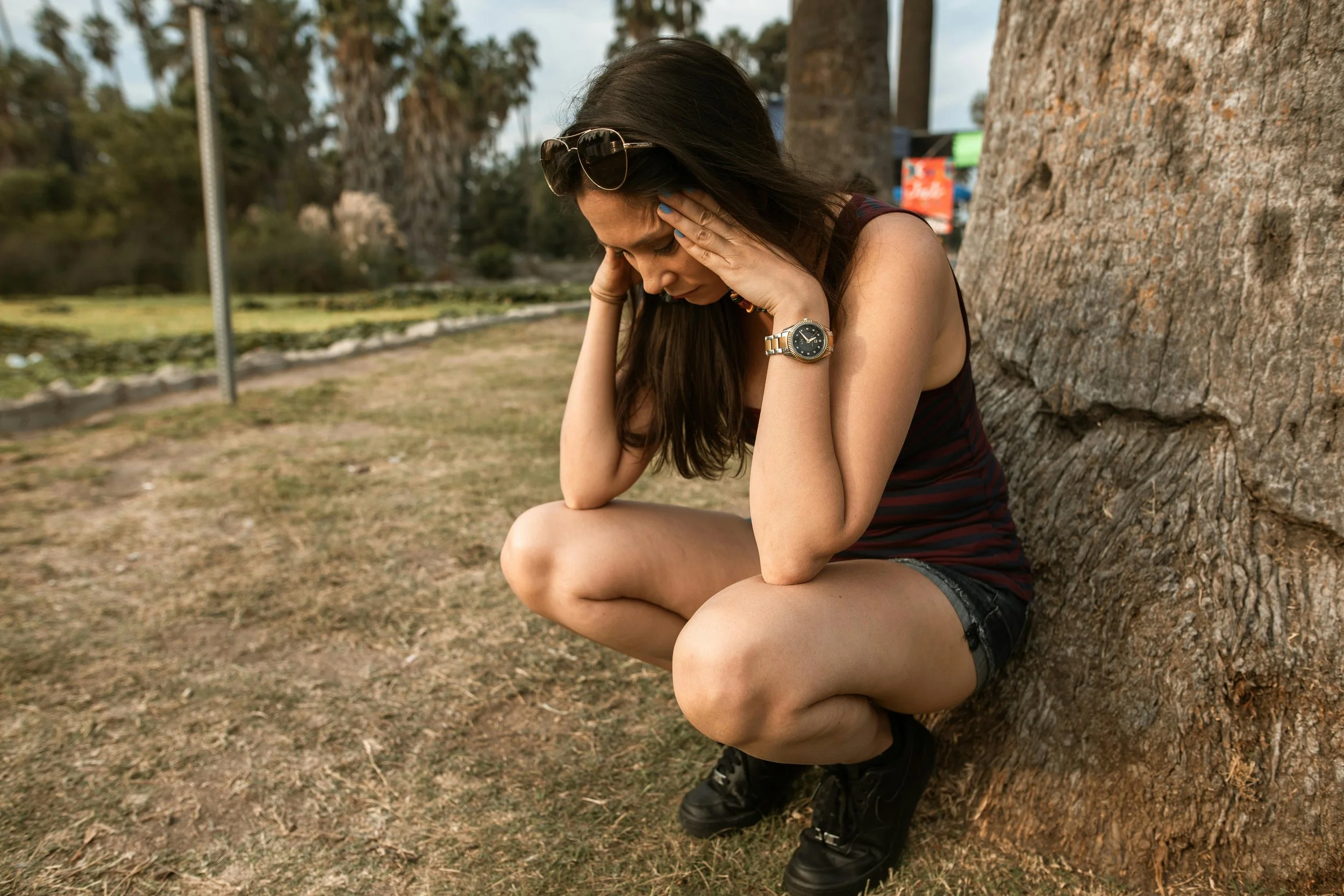Climate Apathy isn’t Indifference, it’s Exhaustion
The author is a Year 13 student (US equivalent, a Senior) at Wycombe Abbey in Buckinghamshire, United Kingdom.
This story is part of The 89 Percent Project, an initiative of the global journalism collaboration Covering Climate Now.
The warnings have been everywhere.
Ice caps are shrinking, forests are turning to ash, statistics are dripping from presentations and pooling at our feet. Yet between images of catastrophe, our social media feeds are peppered with adverts for new trainers, TikTok dance trends and an endless scroll of memes. In a world more informed about climate change than ever, many feel numb, too busy or too comfortable to act. This paradox of caring deeply and yet struggling to engage reveals not indifference but exhaustion and misperception. To understand what keeps the silent majority dormant and how to awaken them,, we need to explore the psychological, social and cultural forces that sap our capacity to feel and to do.
Eighty to eighty-nine percent — that’s the proportion of people worldwide who say they want their governments to do more on climate change. Yet many believe they’re in the minority. This gap between personal conviction and perceived social support gives The 89 Percent Project its name, capturing the quiet disconnection that runs through much of modern climate fatigue.
The Problem: Anxiety, Overwhelm & Numbness
Psychologists, such as therapist Leslie Davenport, who works primarily with young climate-engaged audiences, recognise climate anxiety and eco‑distress as legitimate responses to environmental crises. Climate anxiety is a fear about lost security. Many young people feel anger and betrayal because political leaders have left them with a world in crisis. When that perceived inaction is amplified by news and social media, distress easily slides into numbness.
When perceived inaction is amplified by news and social media, distress easily slides into numbness. Photo courtesy of RDNE Stock project, via pexels.com.
Yet anger and anxiety can be transformed. Researchers highlight the value of constructive hope — optimism paired with meaningful action. Serving on my school’s eco‑council taught me that good intentions don’t always translate into change. We banned single-use cups in the café, but within two weeks the rule collapsed under a tide of complaints and falling sales. We weighed the school’s food waste each week, hoping for a record low, yet enthusiasm ebbed after the first few tries. A weekend tree-planting event drew only a handful of volunteers, and the saplings struggled when no one returned to water them. Even color-coded bins offered at best a moment’s hesitation before rubbish landed in whichever receptacle felt closest.
Those setbacks taught me that apathy often masks fatigue. Many of my peers cared in principle, but habit and convenience overpowered their resolve, paralysing them from taking action. So we tried a different approach: instead of bans and admonishments, the eco-council focused on creation. Joining the Engineering Development Trust’s (EDT) Industrial Cadets programme to design energy-harvesting floor tiles reframed sustainability as problem-solving rather than guilt. It turned climate action from duty into curiosity, and for the first time engagement began to grow.
The Finite Pool of Worry
Why do even committed people tune out the stream of information? Our emotional bandwidth is limited, a finite pool of worry. When jobs, grades or bills crowd our minds, distant crises slip down the list. In privileged settings the pressures may be social rather than material, but the effect is similar: message fatigue sets in and we shrug, “I care, but what difference would I make?”
Digital platforms amplify fatigue. A constant torrent of disaster footage, infographics, personal vlogs and adverts creates information overload: serious issues compete with cat videos and shopping recommendations. Algorithms favour outrage, and rapid context switching dilutes the emotional impact of climate news. The result is emotional saturation, a sense of helplessness when we’re bombarded with information without clear pathways for action.
Social media also fuels consumer culture. Green living is often portrayed through curated aesthetics, while other influencers flaunt fast fashion and globe‑trotting travel. The dopamine loop of likes and purchases offers instant gratification that crowds out slower, collective work. Sociologist Kari Norgaard calls this “socially organised denial”: we know, yet we bracket the knowing because sustained awareness would upend the ease of ordinary days.
I often wonder what would happen if the power cut out for an hour. A ‘Dark Hour’ with no phones, no Wi-Fi, just quiet. Would we listen to the hush or rush to fill it? Even imagining that pause shows how uneasy we’ve become with stillness.
Editor's note: In fact, there is such an hour, courtesy of Earth Hour; next year’s Earth Hour will be March 28, 2026.
The Hidden Truth: The 89% Paradox
A larger obstacle than apathy is misperception. A globe‑spanning survey of 130 000 people in 125 countries found that 89% want their governments to do more on climate and more than two‑thirds are willing to contribute 1% of their income. Yet respondents assumed only about 43% of their fellow citizens would do the same. This gap between personal conviction and perceived social support feeds a spiral of silence, since people stay quiet because they think they’re outliers. This is where the 89% Project draws its name: it plays on the chasm between caring and doing, urging us to break the illusion of being in the minority.
In the microcosm offered by Britain, around 77–80% of Britons say they are concerned about climate change, yet only about half rank it among the top issues. Polls show broad support for renewable energy and net-zero goals across parties, but members of parliament underestimate that support, and cost-of-living pressures crowd climate debate from the political agenda.
This pattern isn’t unique to the UK. Mass protests have waned since the pandemic, and new anti-protest laws have raised risks for activists. Meanwhile, corporate greenwashing (superficial eco-branding without structural change) feeds complacency. When individuals feel that personal sacrifices are the only path, they are more likely to disengage.
The Path Forward: From Numbness to Mobilisation
How do we move from numbness to engagement? A few approaches can help.
Acknowledge limits and link benefits. Connect climate action to tangible benefits: energy‑saving projects could fund scholarships, and frame it as enhancing, not diminishing, quality of life.
Create, don’t just prohibit. Community gardens, repair cafés or co-operative energy schemes turn climate work into a shared experiment. Our engineering project excited far more peers than any ban.
Speak up about the majority. Share surveys showing that most people support climate action. Naming our concern gives others permission to do the same and chips away at the spiral of silence. You could even share the 89 Percent Project’s findings on your own social media: “I was surprised to learn that 89% of us want more climate action. What kind of action do you want to see?”
Conclusion: Keeping Faith With Darkness
The numbness many of us feel isn’t apathy; it’s empathy burnout, cognitive overload, digital distraction and the misperception that we’re alone. I must confess that I don’t have all the answers; like many of us I’m still figuring out how to act. Writing this piece brings some relief but doesn’t magically translate caring into impact. I hope that acknowledging uncertainty, though, invites others into the conversation.The good news is that the majority (89% worldwide) already wants stronger climate action.
Dopamine-fuelled consumer culture thrives on instant gratification; every notification or next-day delivery reinforces the habit of seeking ease over effort, making sustained collective action feel unnatural. In a world that rewards immediacy, convenience becomes addictive; choosing slower, collective action feels like swimming against the current.
By tending to our mental health and resisting these impulses, we create the space for small, mindful acts — dimming a hallway, buying second-hand, sharing a statistic — that tilt the atmosphere and remind us we aren't alone. And by recognising that care is widespread, by turning despair into creation and daring to speak up, we move from numbness to action, carrying the baton for those who will follow.
As I once wrote in the closing lines of a poem:
Perhaps within the stillness,
beyond the noise and haze of pollution,
we’ll hear the whispered call
of a world that longs to heal.
And maybe, just maybe,
we’ll remember how to care.
Climate Apathy isn’t Indifference it’s Exhaustion © 2025 by Youth Environmental Press Team is licensed under CC BY-NC-ND 4.0. To view a copy of this license, visithttps://creativecommons.org/licenses/by-nc-nd/4.0/





